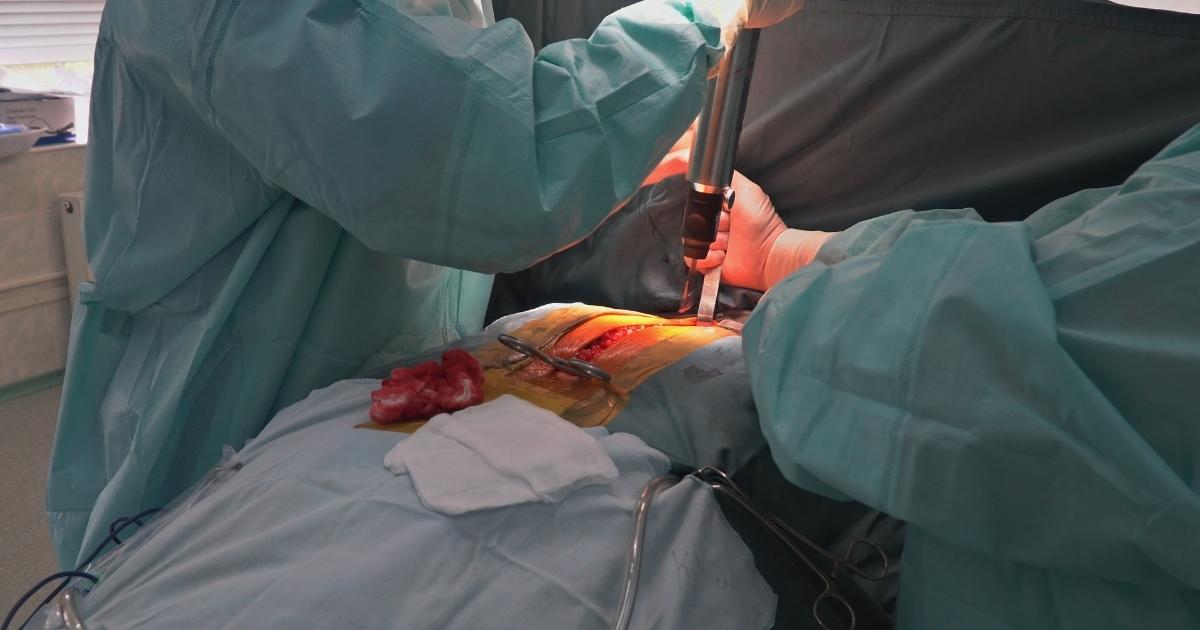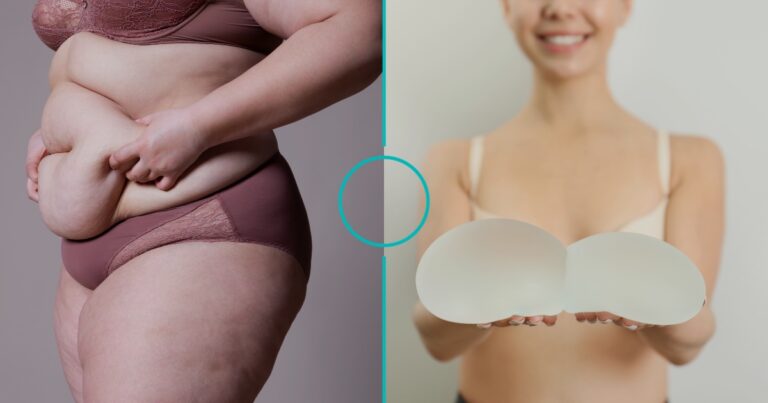The journey towards a healthier life doesn’t end with bariatric surgery. Often, substantial weight loss leads to loose, sagging skin that can affect both physical comfort and self-image. That’s where the role of a Tummy Tuck in Post-Bariatric Surgery comes into play. This procedure, known as abdominoplasty, can dramatically improve body contours, enhance comfort, and contribute to an overall improved self-perception.
What Does Tummy Tuck in Post-Bariatric Surgery Mean?
After substantial weight loss, the skin and tissues often lack the elasticity to conform to the reduced body size. It can lead to discomfort and dissatisfaction with body appearance. A tummy tuck surgery is one way to address these issues by removing excess skin and tightening abdominal muscles.
- The tummy tuck is a cosmetic surgery that can enhance the body’s appearance after significant weight loss.
- For some individuals, this procedure may contribute to an improved body image and increase in self-confidence.
- Patients may also choose a tummy tuck to address physical discomforts associated with excess skin, such as skin irritation and mobility issues.
The Role of Body Contouring in Post-Bariatric Weight Loss
After significant weight loss, body contouring improves the shape and tone of the underlying tissue that supports skin and removes excess sagging fat and skin. This approach encompasses a range of procedures, including tummy tucks, arm lifts, thigh lifts, and others. These procedures aim to reshape the body’s contours for a more aesthetically pleasing appearance.
- Body contouring is often recommended after massive weight loss to enhance the body’s appearance.
- These procedures also help eliminate the discomfort caused by excess sagging skin.
- Body contouring improves the patient’s quality of life and self-esteem by shaping the body’s contours.
Exploring Tummy Tuck Surgery: Procedure and Techniques
Tummy tuck surgery involves the removal of excess skin and fat from the abdominal area and the tightening of the abdominal muscles. A general anaesthetic is used during the procedure, which is performed over one to five hours, depending on its extent.
Book A Consultation With Dr Tarek Bayazid
Top-rated Plastic Surgeon For Tummy Tuck in Dubai
Installment Plan Available
In accordance with the patient’s needs and the surgeon’s recommendations, different techniques are used, such as full or mini abdominoplasty.
| Tummy Tuck Technique | Target Area | Ideal For |
| Full Abdominoplasty | Entire abdominal region | Patients requiring comprehensive contouring |
| Mini-Abdominoplasty | Lower abdomen, below the navel | Those with limited skin excess |
| Endoscopic Abdominoplasty | Areas requiring minor skin removal or muscle tightening | Less invasive procedure |
Assessing Candidacy: Who Qualifies for a Tummy Tuck After Bariatric Surgery?

Not all individuals who undergo bariatric surgery are suitable candidates for a tummy tuck. Ideal candidates are typically those who have maintained a stable weight for at least six months, are in good overall health, and have realistic expectations about the outcomes. It’s essential to understand that a tummy tuck is not a weight loss method but a procedure for removing excess skin and tightening the abdominal area.
- Good candidates for a tummy tuck should be committed to maintaining a healthy lifestyle, including proper diet and exercise.
- They must also be non-smokers since smoking can impair healing and increase complications.
- Candidates should understand that while a tummy tuck will enhance their physical appearance, it won’t necessarily match an “ideal” body image.
The Pre-Operative Phase: Consultation and Preparations for a Tummy Tuck
The tummy tuck surgeon will discuss the patient’s medical history, examine them physically, and outline the procedure before surgery. It is also an opportunity to discuss expectations and potential risks. The preparation phase may include instructions on diet, smoking cessation, and adjusting current medications.
- Surgeons typically review the patient’s health history during the pre-operative consultation and may order additional tests.
- Patients are often instructed to quit smoking before surgery to prevent healing complications.
- Diet and exercise recommendations might be given to ensure the patient is healthy before surgery.
Risks and Complications Associated with Tummy Tucks Post-Bariatric Surgery
Like any surgery, tummy tucks also carry potential risks, including complications from anaesthesia, infection, and poor healing. Other possible complications specific to a tummy tuck can include blood clots, changes in skin sensation, and dissatisfaction with cosmetic appearance. Patients need to discuss these potential risks with their surgeons.
| Potential Risks | Management |
| Complications from anaesthesia | Close monitoring during surgery |
| Infection | Sterile environment, antibiotics |
| Poor healing | Follow pre-and post-operative care |
| Blood clots | Use of compression devices, early mobilisation |
| Changes in skin sensation | Typically temporary, will resolve over time |
| Dissatisfaction with cosmetic appearance | Realistic expectations, post-operative revisions if necessary |
The Recovery Process: What to Expect After a Tummy Tuck
The tummy tuck recovery can vary but usually takes several weeks. Initially, patients may experience swelling, discomfort, and limited mobility. Follow-up appointments with the surgeon are critical to monitor healing and ensure the recovery is progressing as expected.
| Recovery Stage | Typical Experience | Management |
| Early recovery (first few weeks) | Swelling, discomfort, limited mobility | Compression garment, pain medication |
| Mid-recovery (several weeks) | The gradual reduction in swelling, increased mobility | Continued use of compression garment, light walking |
| Late comeback (months) | Return to normal activities, handling of residual swelling or discomfort | Regular exercise, balanced diet, follow-up appointments |
Managing Scars and Long-Term Care After a Tummy Tuck
Scars from a tummy tuck are a customary aspect of recovery, representing the body’s natural healing process after the procedure. Surgeons often use techniques to minimise visible scarring and recommend scar management practices during healing. Long-term care involves maintaining a stable weight and healthy lifestyle to preserve the surgery results.
- Scar care may include the application of topical treatments or silicone sheets and protection from the sun.
- Long-term care primarily involves maintaining a balanced diet and regular exercise routine to prevent significant weight fluctuations that could affect the surgery results.
- Regular check-ups with the surgeon or healthcare provider are recommended to monitor the overall health and the longevity of the surgery results.
See related: Will tummy tuck help in back pain
The Psychological Impact of Tummy Tuck Post-Bariatric Surgery
The psychological impact of a tummy tuck after bariatric surgery can be significant. Patients who undergo this treatment typically report increased quality of life and confidence thereafter.
However, adjusting to a new body image can also present emotional challenges, making psychological support necessary.
- Many individuals report improved self-confidence and body image following a tummy tuck.
- Maintaining realistic expectations about the surgery results is important, and understanding that a tummy tuck is not a cure for body dissatisfaction or underlying emotional issues is important.
- Mental health professionals can provide support and strategies to cope with the emotional aspects of undergoing such a transformation.
Real-life Case Studies: Before and After Tummy Tuck Experiences
Real-life case studies provide valuable insight into the experiences of individuals who have undergone a tummy tuck after bariatric surgery. These stories can showcase the surgery’s transformative effects while highlighting the challenges encountered. These case studies can be a helpful resource for those considering the procedure.
- Case studies often include before and after photographs, which can help prospective patients understand potential results.
- Personal stories can shed light on the emotional journey of undergoing a tummy tuck.
- These real-life experiences can provide a balanced view, discussing the benefits and difficulties of such a procedure.
Future Prospects: Advances in Tummy Tuck Procedures and Post-Bariatric Care
With continual advances in medical technology, the methods and techniques for tummy tuck surgery continue to evolve. It could include less invasive procedures, quicker recovery times, and improved results. Obesity rates will likely increase demand for post-bariatric surgeries, including tummy tucks.
- Advanced surgical techniques may reduce scarring, discomfort and quicker recovery times.
- As the field evolves, surgeons and healthcare providers will likely have more tools to aid patient recovery and satisfaction.
- Further research and clinical studies are necessary to improve the outcomes and minimise the risks associated with tummy tucks post-bariatric surgery.
A tummy tuck post-bariatric surgery effectively addresses excess skin and contour irregularities, improving the patient’s quality of life and self-esteem. It represents an essential part of the weight loss journey, facilitating long-term weight maintenance. However, careful patient selection and thorough preoperative evaluation are vital for successful outcomes.
Dr Tarek Bayazid, a leading plastic surgeon in Dubai, is highly regarded for his work in tummy tucking post-bariatric surgery. His innovative techniques significantly improve patient care and aesthetics following significant weight loss.
Trained at Belgrade University and the Clinical Center of Serbia, he’s licensed by the Serbian and Dubai Health Authority. He is a member of esteemed societies like ISAPS and MAFAC. At Dr Tarek Bayazid, we prioritise high-quality care and personal attention to aid your transformation journey. Book a consultation today to explore the benefits of a tummy tuck post-bariatric surgery.
FAQs
Who is a good candidate for a tummy tuck after bariatric surgery?
Ideal candidates for a tummy tuck after bariatric surgery are individuals who have maintained a stable weight for at least six months, are in good overall health, have realistic expectations about the outcomes, and are non-smokers.
What risks are associated with a tummy tuck after bariatric surgery?
Like any surgery, a tummy tuck carries potential risks such as complications from anaesthesia, infection, poor wound healing, blood clots, changes in skin sensation, and dissatisfaction with the cosmetic appearance. Hazards can be minimised by following your surgeon’s pre-and post-operative instructions closely.
What is the ideal timing for a tummy tuck after bariatric surgery?
The timing can vary depending on individual circumstances, but it’s generally recommended to wait until your weight has stabilised for at least 6-12 months after bariatric surgery. This ensures the best results and minimises the risk of complications.
How do I prepare for a tummy tuck after bariatric surgery?
Your surgeon will provide specific pre-operative instructions, including quitting smoking, adjusting medications, and maintaining a stable weight. Being in good overall health before the surgery will enhance the outcome.
How can a tummy tuck impact my psychological well-being post-bariatric surgery?
Many patients report improved self-esteem and body image after a tummy tuck. However, it’s important to maintain realistic expectations about the surgery results. Professional psychological support may be beneficial when adjusting to your new body image.








